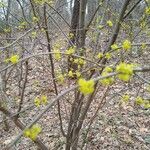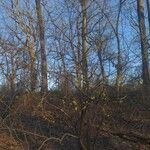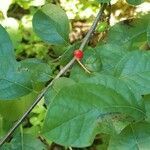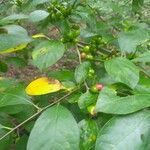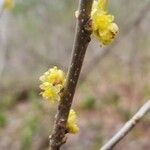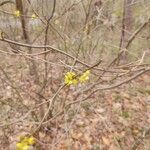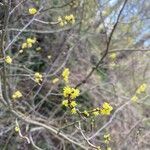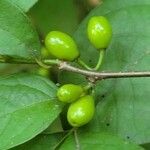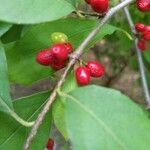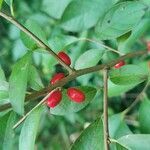Shrubs or small trees , to 5 m. Young twigs glabrous or sparsely pubescent. Leaves horizontal to ascending, strongly aromatic (spicy) throughout growing season; petiole ca. 10 mm, glabrous or pubescent. Leaf blade obovate, smaller blades generally elliptic, (4-)6-15 × 2-6 cm, membranous, base cuneate, margins ciliate, apex rounded to acuminate on larger leaves; surfaces abaxially glabrous to densely pubescent, adaxially glabrous except for a few hairs along midrib. Drupe oblong, ca. 10 mm; fruiting pedicels of previous season not persistent on stem, slender, 3-5 mm, apex not conspicuously enlarged. 2 n = 24.
It is a rounded deciduous shrub. It grows 3 m tall. The branches are straight and upright. The leaves have a smell. They leaves are bright green and 12 cm long. The flowers are small and star shaped. They are in heads. They are greenish-yellow. The fruit are red or yellow berries. They are glossy.
